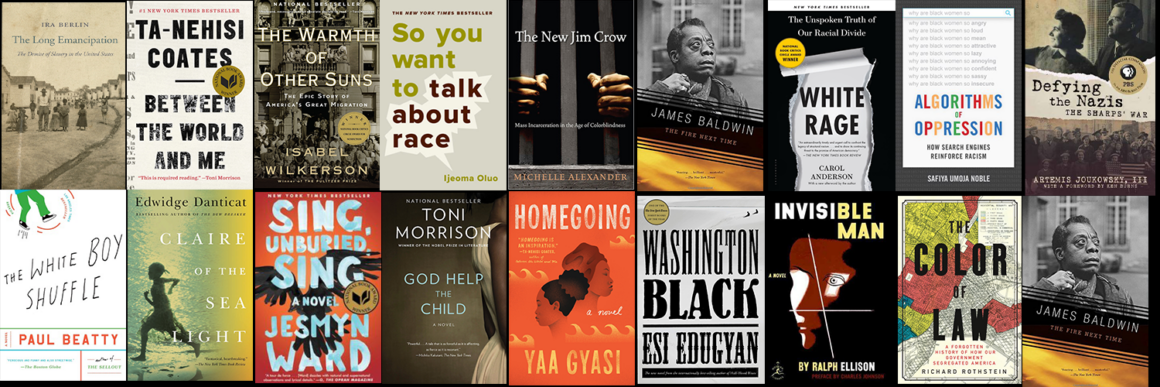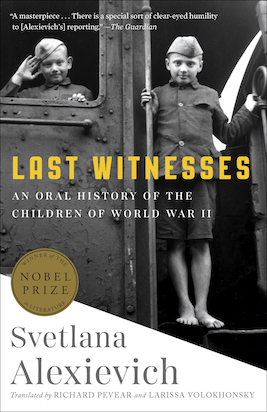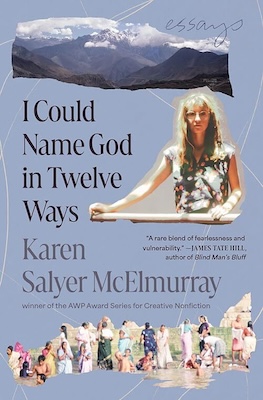Editor’s Note: This article mentions the five-part series by Andrea Elliott titled “Invisible Child” published in 2013 in The New York Times. This series has since been expanded into a recently published book, Invisible Child: Poverty, Survival & Hope in an American City.
The longform book reviews on bookscover2cover are narrative, descriptive and analytical. Through a close reading of the text, the reviewer identifies themes and motifs embedded in the text and examines contextual information to verify facts. To develop a coherent argument in favor of the book, the reviewer offers readers insight, not mere judgement.
What is longform writing?
Longform writing tends to be defined both by its length—usually over 1,500 words—and by the type of writing—original, nonfiction narrative journalism or storytelling. Most people would agree that longform journalism requires in-depth research and high quality reporting, and they would ask the same of longform narrative storytelling—excellence both in craft and content. On the writer’s part, the longform requires considerable time and effort in the writing, and on the reader’s part, careful attention in the reading. You cannot skim a longform article or essay. Joanna Demkiewicz and Kaylen Ralph, publishers of The Riveter, a new magazine that publishes longform and narrative journalism by women, see as their mission the promotion of “longform as a lifestyle element on par with music, fashion, beauty, [and] health.”
As a lifestyle, then, longform becomes, for writers and readers, the exploration and understanding of a subject in all of its complexities.
We are both longform junkies, because we believe in the breadth of creativity, narrative, investigation, research, etc. allowed with this particular kind of storytelling… Longform is a vital form of communication; we want to make room for the female storytellers who communicate this way. — Joanna Demkiewicz and Kaylen Ralph, publishers of The Riveter
Longform style in journalism
“Invisible Child” by Andrea Elliott
A masterpiece of original, nonfiction narrative journalism was published in the New York Times in December 2013. Titled “Invisible Child,” it was a five-part series by the investigative reporter Andrea Elliott that ran to 28,738 words, about 5,700 words per article. Elliott followed eleven-year-old Dasani and her homeless family for fifteen months, using video and audio recordings, photographs, transcripts, and dozens of person-to-person interviews with Dasani, her family, and shelter residents at the Auburn Family Residence in Fort Greene, Brooklyn. Elliott’s sources included family case files, records from the city and state inspection offices, the city police, the New York City Department of Homeless Services, the Coalition for the Homeless, the Legal Aid Society, and the U.S. Census Bureau.
In 2013, the Long Island University awarded Elliott the George Polk award, citing “Invisible Child” as a riveting series focusing on one of the 22,000 homeless children in New York City “to produce an unsparing inside-out account of the realities of urban poverty that has echoes of Charles Dickens.” Clearly, Elliott’s investigative five-part series was a feat of superior longform journalism that delved into the complex lives of the homeless.
Longform style in the book review
“Pakistan: Worse Than We Knew” by Ahmed Rashid
The New York Review of Books has been publishing longform book review essays since 1963. The first reviews were not your run-of-the-mill kind, however. They were intellectual essays by well-known authors, such as Hannah Arendt, Saul Bellow, Paul Goodman, Lillian Hellman, Irving Howe, Normal Mailer, and Susan Sontag, who were willing to contribute essays for free. Thereafter, The New York Review of Books became known for its “intellectual firepower.” Its writers were “the critical elite.”
In the June 5, 2014 issue of The New York Review of Books, Ahmed Rashid, the author of books on Pakistan, Afghanistan, and Central Asia, reviews Carlotta Gall’s recently published book, The Wrong Enemy: America in Afghanistan, 2001-2014. In the first paragraph, Rashid establishes his authoritative knowledge of the subject of Gall’s book: Afghanistan and Pakistan and the countries’ volatile relationship with the United States. Traveling in Central Asia in April of 2014, he asked officials in these countries what they thought of the growth of Taliban and Islamic extremism in Afghanistan and Pakistan, thus establishing his credentials as an investigative reporter. Further, given that he has written a trilogy about Pakistan and Afghanistan, he can make factual statements such as: “For forty years Pakistan has been backing Islamic extremist groups as part of its expansionist foreign policy in Afghanistan and Central Asia and its efforts to maintain equilibrium with India, its much larger enemy.” For at least the first third of Rashid’s review, then, he provides background before he arrives at the first mention of The Wrong Enemy.
The facts of Rashid’s authority and experience in Central Asia is central to establishing his authority, primarily because he questions Gall’s thesis: The West’s failure in Afghanistan and the Taliban’s successes are a result of the Pakistani military and the Pakistani Taliban. Naming her “the leading Western reporter living in Kabul” and “a one-woman human rights agency,” Rashid nevertheless argues that Gall’s analysis has gaps in it. He concludes first, that America had also failed in Afghanistan because of ineffectual military strategy and a paucity of diplomacy and nation-building; and second, that neighboring countries had intervened in Afghanistan’s civil war after 1989. In addition to the above two points, Rashid questions Gall’s account of the rise of the Taliban. Providing historical background, experience, and deep knowledge and understanding of this region of Central Asia, Rashid offers the reader an intellectual book review that illuminates the subject with its manifold layers of complexity. His book review is not mere description and judgment, but also exposition and analysis. Rashid’s longform book review comes in at 4,297 words.
Why the longform book review on bookscover2cover?
The longform review is described from the reader’s point of view as “a place to read an in-depth, researched, narrative style review.” From the writer’s point of view, it is described as a hybrid style of narrative nonfiction that uses a journalistic approach. How does it differ, then, from an original, nonfiction narrative journalistic essay or story, as described above in “Invisible Child,” or from Ahmed Rashid’s review of Carlotta Gall’s The Wrong Enemy? And what does this mean in practice?
The longform book reviews on bookscover2cover combine a narrative, descriptive, and analytical style to persuade readers to read the book. Through a close reading of the text, the reviewer tells the “story” of the book, identifying important passages that give deeper meaning to the thesis, as well as quoting from the text to provide factual authenticity, rather than opinion. Developing a coherent argument in favor of the book—not offering mere judgment—gives readers reasons why they should read the book itself. Although there is no investigative reporting as there is in “Invisible Child,” or first-hand knowledge of the subject as in Rashid’s book review, bookscover2cover reviews are deeply researched. The books are chosen for complexity, relevance, value, and style.
Liu Xiaobo, No Enemies, No Hatred
In reviewing the book Liu Xiaobo, No Enemies, No Hatred: Selected Essays, edited by Perry Link, Tienchi Martin-Lio & Liu Xia, I take the reader on a journey into Chinese politics and nationalism, a journey that elucidates Liu Xiaobo’s radicalization after the 1989 Tiananmen student-led pro-democracy movement. In a detailed exposition of his essays, including his final statement at his trial in December 2009, “I Have No Enemies,” at which he declared that he had no enemies and no hatred, I show that because of Liu’s countervailing writings on democracy, nonviolence, and human rights, he put his life at risk. In December 2009—twenty years after Tiananmen—the Chinese government tried him on subversion of state power: He was a leading signatory to Charter 08, a document that called for the end of the Communist Party and replacing it with a democratic system of government based on the universal principals of human rights. Liu was sentenced to eleven years in prison. When the Nobel Peace Prize committee awarded him the Nobel Prize in October 2010, the Chinese government censored all communication within the country and placed his wife Liu Xia under house arrest.
I wanted to review Liu Xiaobo, No Enemies, No Hatred: Selected Essays to shed light on the dissident movement in the People’s Republic of China. Little did I know that I would be deeply affected by the man Liu Xiaobo. I continue to follow him in the news, as his name appears whenever the Chinese government incarcerates dissidents—most recently before the anniversary 25th anniversary of Tiananmen Square. My interest and compassion are hardly unique. Hundreds of thousands have called for his and his wife’s release (from house arrest). Amnesty International recognizes Liu Xiaobo as a prisoner of conscience. The review of Liu Xiaobo, No Enemies, No Hatred runs 4, 467 words.
Interested in more? Consider these longform articles.
On Mars I learned that boredom has two sides—it can either rot the mind or rocket to new places.
On Running Again by Miranda Ward
Last Saturday, the first almost-warm day of the year, I went for a run along the river, into town, through the park—a four mile loop in perfect, breezy, sunny conditions. It was glorious for about a mile and a half, at which point I developed a cramp in my stomach.
Snow Fall: The Avalanche at Tunnel Creek by John Branch
On the December 20, 2012, website of the New York Times, an article appeared that changed the future of longform storytelling in the digital age. It became a sensation and a verb: “Can we snowfall this story?” What was the sensation all about? The subject was a fatal avalanche in Washington State earlier that year. Everyone knows avalanches can be fatal. But everyone has not experienced an avalanche online. The moment you click onto “Snow Fall” you experience something so different you will return to it again and again.
Telling the story of the fatal accident, Branch purposely integrated photos, videos, and graphs in the narrative so that this media became narrators themselves. Further, as Jeremy Rue writes in “The Snow Fall Effect and Dissecting the Multimedia Longform Narrative, the technical and design components were innovative and experimental: silent videos that played automatically; scrolling mechanisms that triggered viewer actions; a “curtain” effect that covered or revealed images and videos. “Snow Fall” has been viewed more than 3 million times.
Branch was awarded the 2013 Pulitzer Prize for Feature Writing “for his evocative narrative about skiers killed in an avalanche and the science that explains such disasters, a project enhanced by its deft integration of multimedia elements.”






